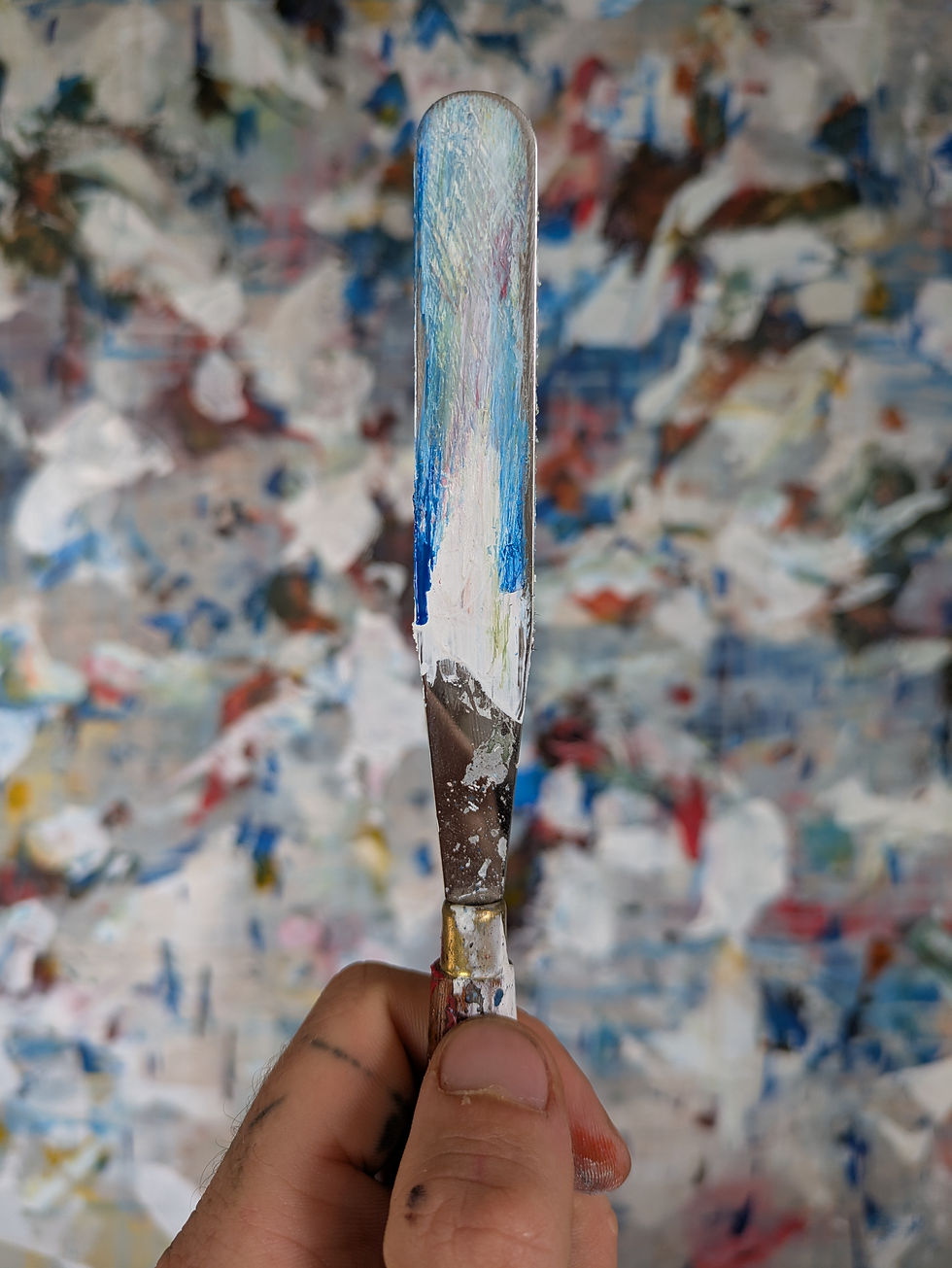1. The Encounter: Why We Look at Art
- Jakub Sohe

- Oct 6
- 2 min read
Updated: Oct 22
At the heart of any encounter with art lies a dynamic far older and more universal than art itself — the meeting of a subject, object, and the awareness that perceives their relation. Before there was painting or music, before there was even language, there was this — the moment of noticing. The moment where perception lingers, unprompted, on something that neither feeds nor threatens, yet compels us to stay.
Art, in this sense, is not born from decoration or craft. It is born from curiosity — the deep animal impulse to look, to search for pattern, to relate. It seems to be the case that we humans have always been drawn not only to the things themselves but to the possibility of relation between them. The rhythm of waves, the arc of branches, the way light filters through mist — these don’t serve survival directly, yet we can’t help but see them, connect them, make something of them.
In art, this instinct is laid bare. The artwork offers us no practical use; it neither feeds us nor shelters us. And yet we care for it. Something in us recognizes in this uselessness a reflection of our most essential capacity — the urge to orient within the world through relation, to map its coherence. When we stand before a work of art, we are not only seeing it; we are seeing ourselves seeing. The artwork becomes a mirror for the act of perception itself, for the way our awareness binds experience into form.
This is why the experience of art can feel both intimate and estranging. It reminds us that seeing is not passive. It is a form of participation — a reaching out. The viewer, the artwork, and the act of viewing form a living trinity, each contingent on the other. When one moves, all move. Meaning is not housed in the object, nor in the subject, but in the shimmering interval between them.
To encounter art, then, is to return to the root of our relation to the world: to re-experience curiosity before it calcifies into certainty, to dwell in the tension between what is seen and what is meant. Art is where we practice the delicate art of alignment — not between right and wrong, but between experience and understanding, sensation and symbol.
And perhaps that’s why art endures even when its objects change. It offers us a space where perception itself becomes visible — where we can momentarily see the scaffolding of awareness, the pulse of relation, the quiet miracle that there is anything to notice at all.



Comments